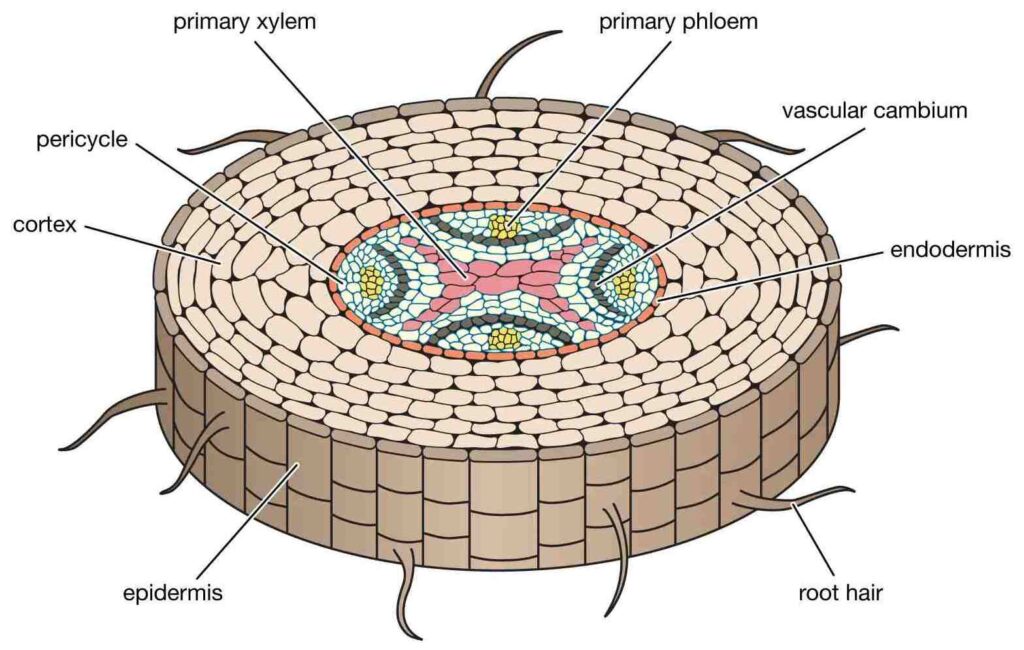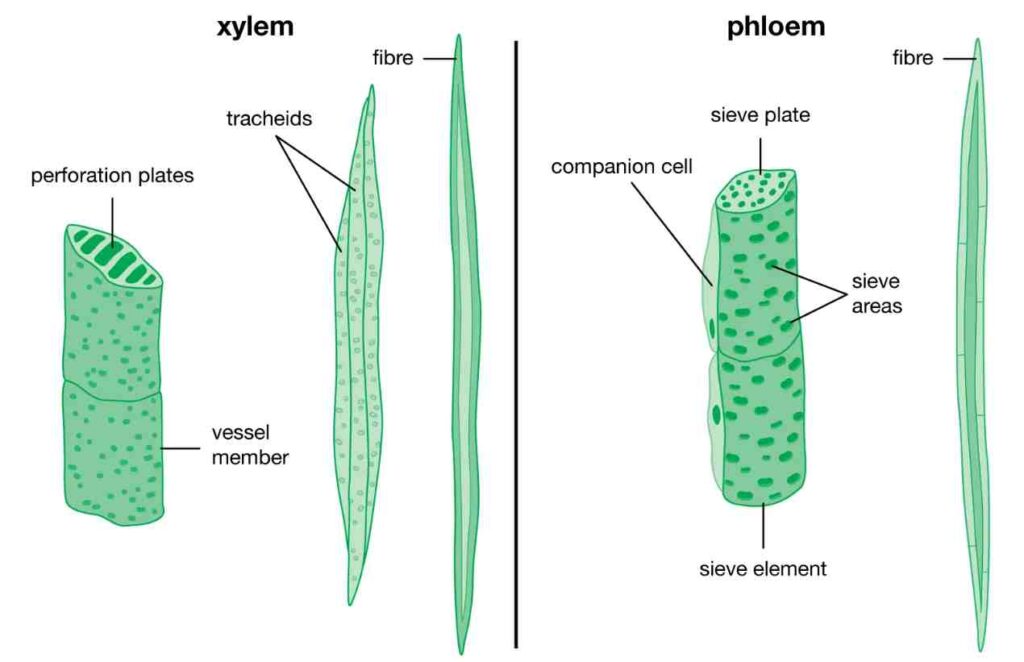What do you mean by Monocot stem?
The term “monocot stem” describes the stem of a flowering plant that is monocotyledonous, or that kind of plant that has a single cotyledon (seed leaf) in its seeds.
Table of Contents
The seemingly simple structure of a grass stalk, a bamboo shoot, or a palm tree trunk hides a complex and fascinating world within. These are monocot stems, characterized by unique internal arrangements that reflect their adaptation for efficient growth and survival. Unlike their dicot counterparts, monocot stems display a distinctive pattern of vascular tissue arrangement, a lack of cambium, and specialized tissues that support their upright growth and contribute to their distinctive features.
A Glimpse into the Inner Life: The Vascular Bundles
The foundation of a monocot stem lies in its vascular bundles, the intricate networks responsible for transporting water, nutrients, and sugars throughout the plant. Unlike the ring-like arrangement found in dicot stems, monocot vascular bundles are scattered throughout the ground tissue, creating a seemingly chaotic yet beautifully organized pattern.
The Heart of the Matter: The Vascular Bundle Structure
Each vascular bundle in a monocot stem is a miniature ecosystem, housing the essential components for long-distance transport:
Xylem

This specialized tissue forms the core of the bundle and acts as the plant’s plumbing system. Xylem cells, dead and hollow, are arranged in long, connected chains, forming vessels that efficiently transport water and dissolved minerals upwards from the roots to the leaves.
Phloem

Surrounding the xylem, the phloem transports sugars produced during photosynthesis from the leaves to the rest of the plant. Phloem cells are living, containing a unique structure called a sieve tube that facilitates sugar movement.
Bundle Sheath

A layer of specialized cells surrounds the xylem and phloem, providing structural support and regulating the movement of substances between the vascular bundle and the surrounding ground tissue.
The Scaffolding of Life: The Ground Tissue
The ground tissue, also called the parenchyma, surrounds the scattered vascular bundles. This tissue comprises mainly parenchyma cells, responsible for storage, photosynthesis, and various metabolic functions.
Parenchyma Cells
These living cells, with thin walls and large vacuoles, act as the workhorses of the ground tissue. They store water, nutrients, and starch, providing essential reserves for the plant’s needs.
Chlorenchyma
In some monocot stems, specialized parenchyma cells, called chlorenchyma, are present. These cells contain chloroplasts, enabling photosynthesis to occur in the stem, adding to the plant’s energy production capacity.
The Protective Shield: The Epidermis
Encasing the entire stem is the epidermis, a single layer of tightly packed cells forming a protective barrier against the outside world. This layer helps retain moisture, protects against pathogens, and can even play a role in gas exchange.
Cuticle: Often, the epidermis is covered by a waxy layer called the cuticle. This layer further reduces water loss and protects against harsh environmental conditions.
Stomata: Specialized pores called stomata are present in the epidermis. These pores allow for gas exchange, enabling the plant to take in carbon dioxide and release oxygen during photosynthesis.
Special Features of Monocot Stems
Monocot stems exhibit several unique adaptations that set them apart from their dicot counterparts:
Lack of Cambium: Unlike dicot stems, monocot stems do not possess a vascular cambium, the meristematic tissue responsible for secondary growth, which leads to the formation of wood in trees. This explains why monocot stems generally do not exhibit secondary growth, resulting in their typically slender and grass-like appearance.
Scattered Vascular Bundles: The scattered arrangement of vascular bundles is a defining characteristic of monocot stems. This arrangement provides flexibility and allows for efficient transport of water and nutrients throughout the plant, supporting its rapid growth.
Fibrous Roots: Monocot stems are typically associated with fibrous root systems, where numerous thin roots spread out from the base of the stem, forming a dense network for anchoring and water absorption.
Sheathing Leaf Bases: In many monocots, the base of the leaves envelops the stem, forming a protective sheath. This sheath can provide additional support and protection for the stem, particularly in environments with harsh conditions.
Evolutionary Adaptations and Success
The unique internal structure of monocot stems reflects their evolutionary adaptations for success in diverse habitats. The scattered vascular bundles, efficient water transport, and flexible growth patterns contribute to their survival in various environments, from grasslands to forests and even waterlogged conditions. Their diverse forms, from the slender blades of grass to the towering trunks of palm trees, are testaments to the adaptability and resilience of this important plant group.
Exploring the Diversity
The internal structure of monocot stems varies within the group, reflecting their different growth habits and environmental adaptations. For example, the stems of grasses exhibit a more delicate structure with thinner vascular bundles, while the stems of bamboo and palm trees have thicker and stronger bundles to support their massive size and upright growth.
The Importance of Understanding
Understanding the internal structure of monocot stems is crucial for appreciating their ecological importance and for developing effective management practices for these important plants. From agricultural crops like rice and wheat to economically valuable species like bamboo and palms, monocots play a vital role in our lives. By delving into their internal anatomy, we gain a deeper appreciation for their remarkable adaptations and the critical role they play in maintaining the balance of our planet.
Conclusion
The seemingly simple structure of a monocot stem is a complex and fascinating world within. The unique arrangement of vascular bundles, the specialized ground tissue, and the adaptations for efficient growth and survival showcase the remarkable diversity and evolutionary success of this important plant group. By understanding the intricate internal workings of monocot stems, we gain valuable insights into their ecological importance and the critical role they play in shaping our planet.
Frequently Asked Questions(FAQ)
Define Xylem?
Plants have vascular tissue called xylem, which is in charge of moving water and dissolved minerals from the roots to the rest of the plant. Consider it as the plant’s plumbing system, transporting the essential nutrients that keep the plant alive and well.
What do you mean by Chlorenchyma?
Plant tissue that is specifically designed for photosynthesis is called chlorenchyma. The brilliant color of plants comes from the green, fleshy parts of leaves, stems, and sometimes even fruits.
Related Articles

